The Faroe Islands
Steep sided cliffs and sea stacks play host to an abundance of wildlife. Explore the wild and rugged islands overland and by boat.
You are here: Home > The Faroe Islands
Map of The Faroe Islands
The 18 Islands of the Faroes are wild and rugged, peaceful yet dramatic.
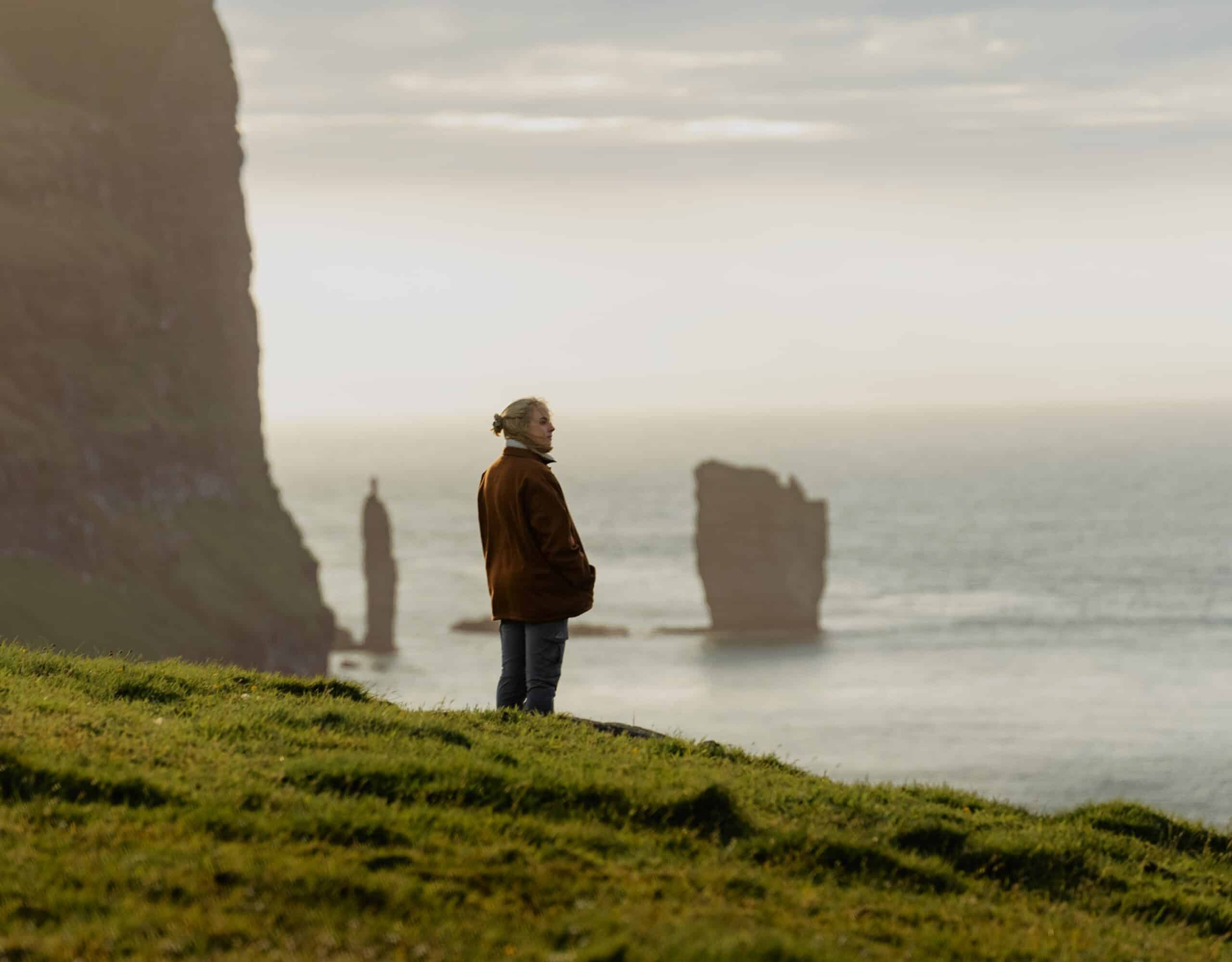
The sharp peaks and steep cliffs of the Faroe Islands jut up proudly from the North Atlantic Ocean, remote and isolated, windswept and wild. This archipelago of 18 Islands sits centrally between Scotland, Iceland and Norway, though they are an autonomous territory of Denmark.
This is a landscape of contrasts, including the weather! In one day, you can have fog and rain, sunshine and rainbows. For nature lovers, this is the rugged appeal of the place and the narrow fjords, sea stacks and sheer rock faces of the coastline offer truly breath-taking scenery. But there is also a quiet beauty to this grass-blanketed landscape and the lack of trees means uninterrupted views between the islands.
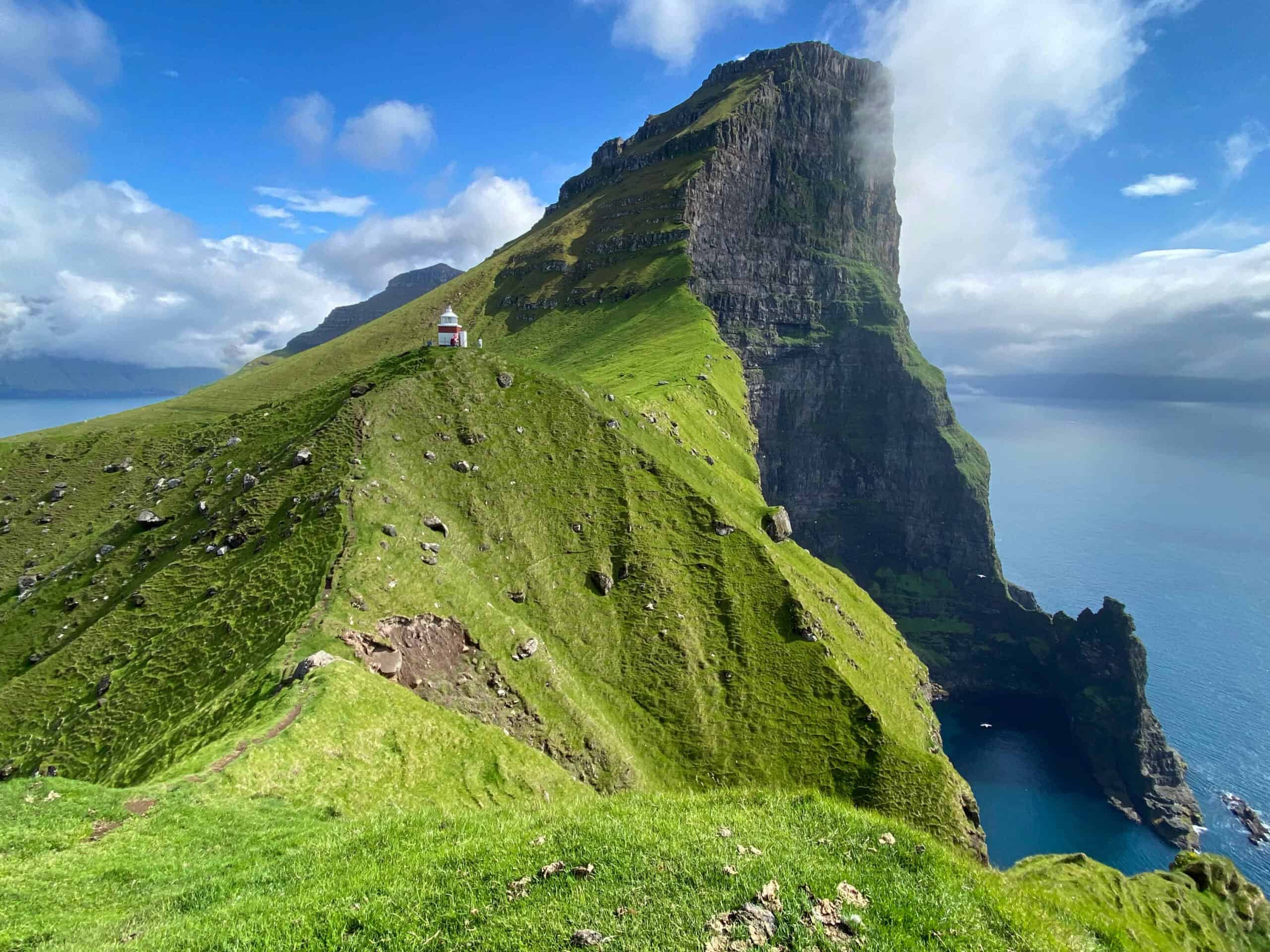
Despite its remote aspect, the Faroes has plenty on offer. Walking is a very popular and the views are your constant reward. Footpaths can be a little indistinct, especially during times of low cloud, though the paths are waymarked with strategically placed cairns and wooden posts. For those that are happy to walk independently, we have a good range of route guides that we send out to people travelling with us. The routes that we have plotted on the Footpath app are not as detailed as an ordinance survey map, but they are a good 3D visual guide and will show you the distances and the general topography of the route.

Exploration of the wild coastline is best by boat and you can choose the pace of your journey, whether that’s on a private rib, joining a group tour or enjoying the slower pace of sailing in a schooner. Most popular perhaps is to take a boat trip to see the nesting puffins on Mykines, passing the famous Drangarnir sea stacks and Mulafossur Waterfall en route. The peak of puffin season is generally from the end of May to end of July, when the puffins will be actively nesting. You can also opt to travel by helicopter, which would be in the region of £75 each way if travelling to Mykines. Unless you are paying for an expensive private charter, the helicopters are simply a mode of transport but offer spectacular aerial views. Those who would like to take a helicopter flight must book well in advance.
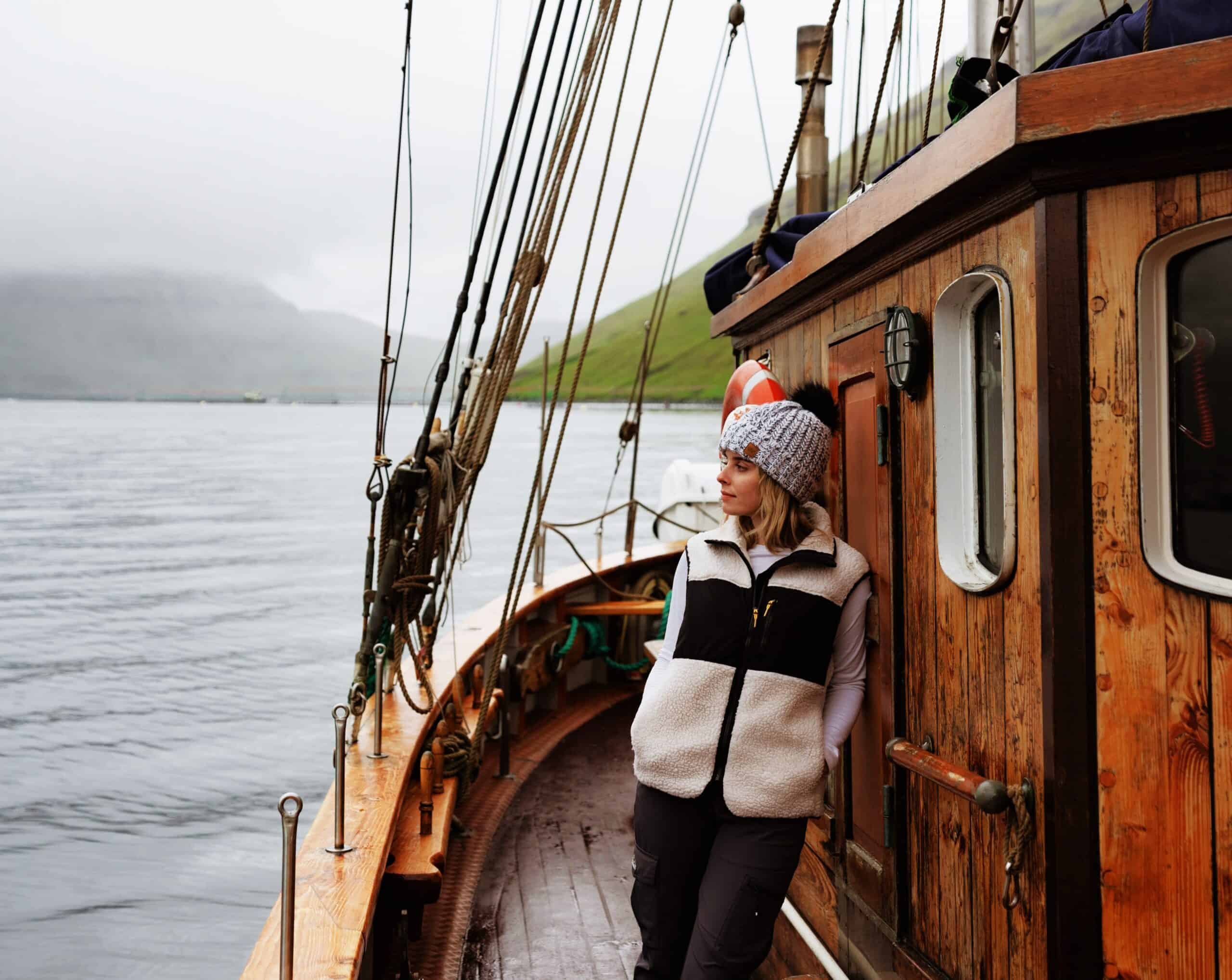
There is plenty to do on land too. If you stay in the capital port of Torshavn, you can walk past the grass roofed government buildings on Tinganes and visit the National Gallery, which displays art right the way through from the 1830’s to the contemporary works of today. You can sample the ales on offer at the Mikkeller craft bar, enjoy fine dining at a variety of restaurants, and join a lithographic workshop to learn about the art of stone printmaking. To get a spectacular view of Torshavn from an elevated location, you can walk up to the 16th century fort at Skansin, first used to protect the island against pirates and later occupied by the British to use as a military base during the second world war.
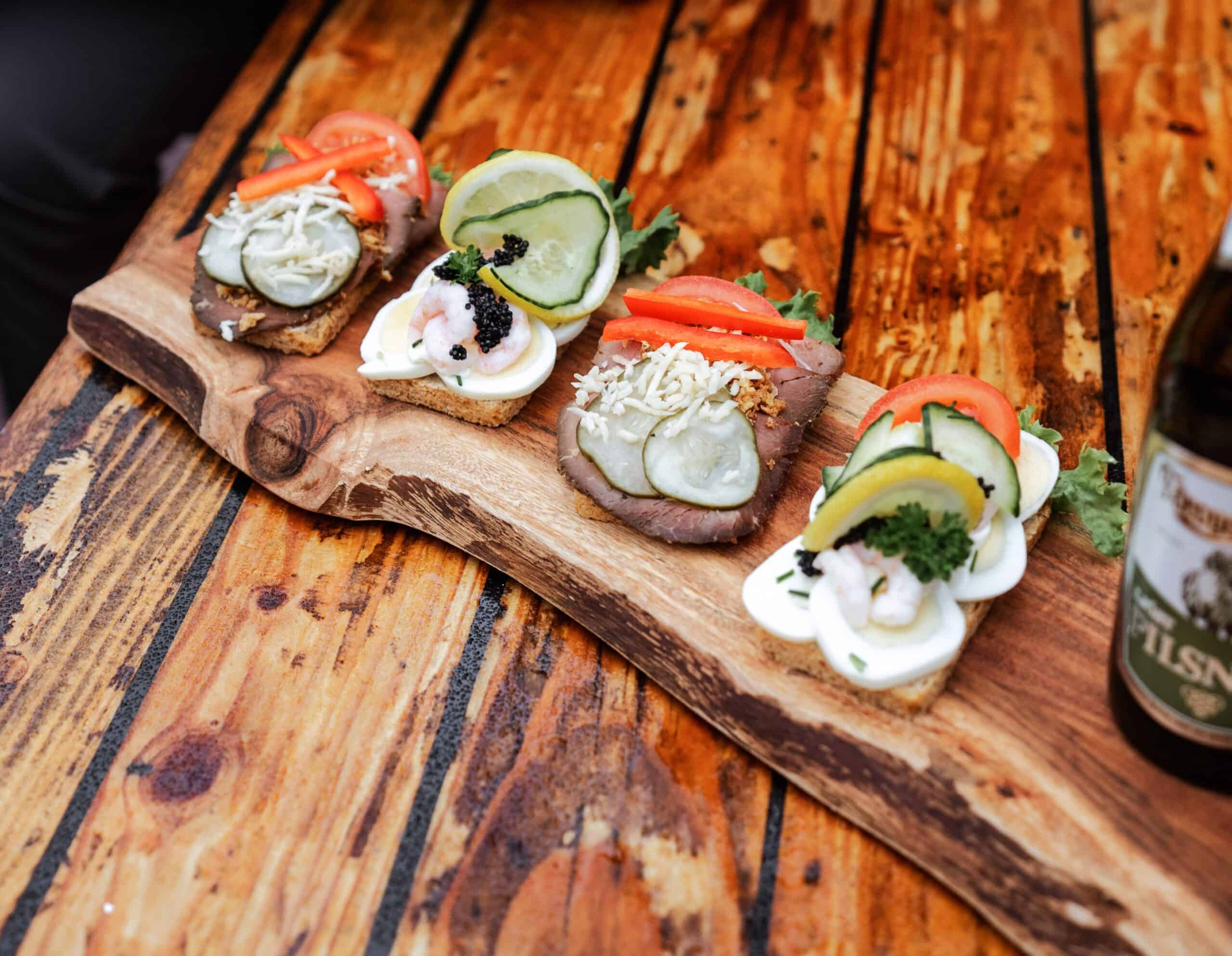
Between May and August, there are lots of wonderful music festivals on the islands. If you plan to visit during this time, let us know and we can find out what’s going on during your stay, then we can schedule your itinerary to include any events that you would like to enjoy.
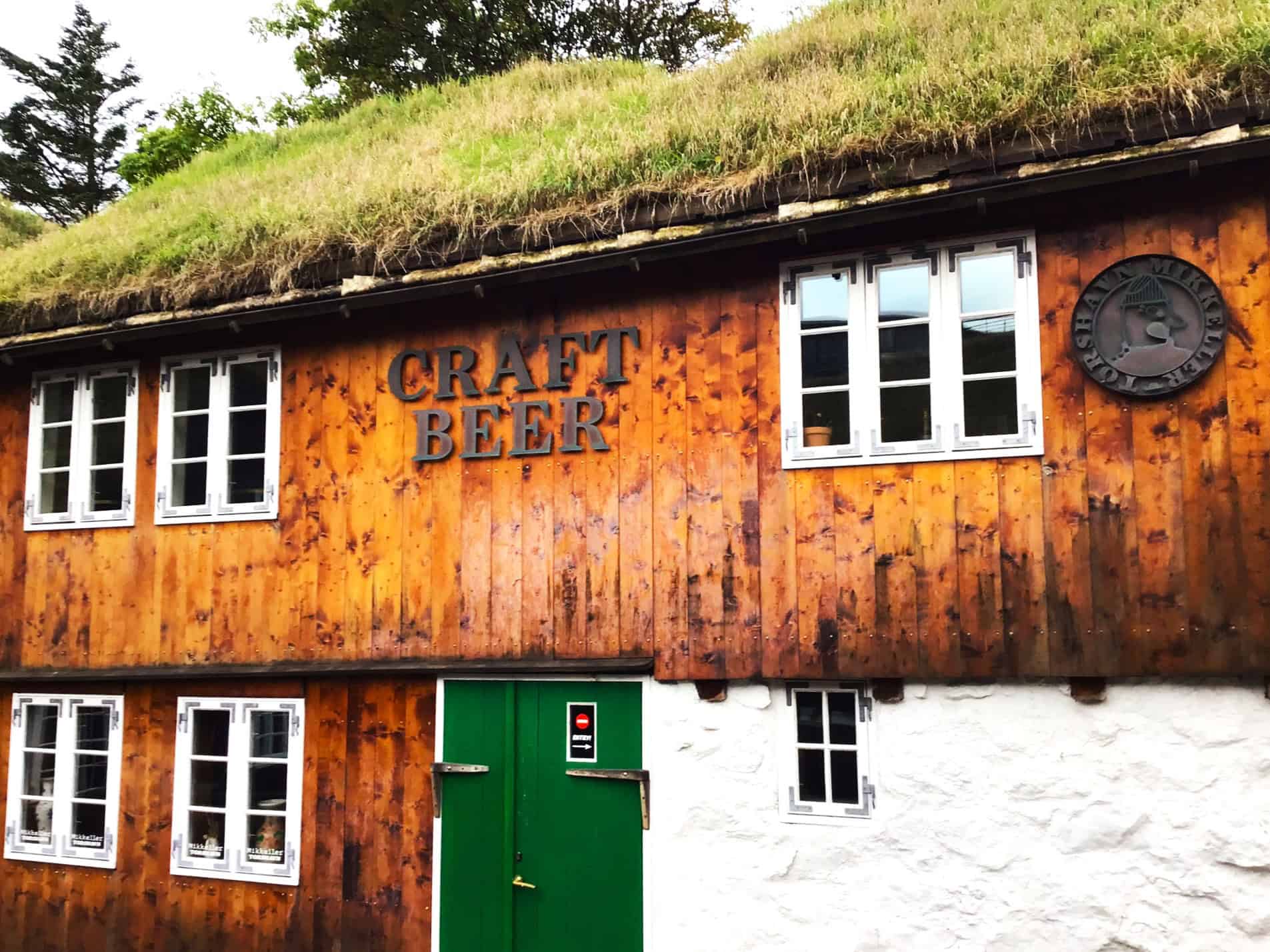
Puffins of Mykines
The westernmost island of the Faroes is an important breeding ground for several species of seabird including northern fulmars, European storm petrels, and most famously 125,000 pairs of Atlantic puffins. You can take a daytrip to this island to see the puffins up close.
Food of the Faroes
Unfortunately, the 2-start Michelin restaurant KOKS has relocated to Iceland whilst they are building a brand new restaurant in the Faroe Islands, but there is still a wealth of fantastic restaurants, including the Michelin recommended Ræst. Whilst traditionally Faroese food as revolved around fermented meat and fish it is becoming much easier to find vegetarian and vegan food as well, including a six-course vegan taster menu at Katrina Christiansen, one of our favourite restaurants in the Faroe Islands.
Boat Tours
On the Faroe Islands you’re never more than 5 km from the ocean, and, as such, it’s a great place to explore by boat. There are various options, but one of the most impressive is a tour along the dramatic cliffs from Vestmanna where you will pop in and out of the grottos hidden along the cliff face.
Hiking
The Faroe Islands have an abundance of walking routes offering breath-taking views and abundant wildlife, mainly birds such as curlew, snipe, plovers, and, petrels. Footpaths can be a little indistinct but are waymarked with strategically placed cairns and wooden posts. For less experience walkers, we can organise a local guide. For those that are happy to walk independently, we send you routes plotted on the Footpaths app and, whilst these are not as detailed as an ordinance survey map, they are a good 3D visual guide.
Sample Craft Beer at Mikeller
Though the interior of the bar here is modest and understated, the staff are really friendly and you can sample a great selection of local ales. This is a great place to go before dinner.
Sea Kayaking - Guided Activity
The Faroe Islands are a dream location for kayaking, with so many bays and fjords to explore. You can head out with an expert guide and enjoy a half or full day exploration (or more). There are kayaking tours for all levels, from complete beginners to veteran paddlers. For beginners, the tours from Hósvík on Streymoy are the most suitable because you explore the sheltered Tanga Fjord between Streymoy and Eysturoy.
Lithographic Workshop
Steinprent is the Faroese term for stone lithography. The old lithographic factory runs a workshop where you can learn all about the history and process of this fascinating tradition. Despite this being such an old art form, the gallery here displays a surprisingly modern selection of prints, from landscape to Pre-Raphaelite-style paintings and pop art to contemporary works. All prints of the prints are numbered and signed by the artist and the stone print gets sanded back, so that print can never be produced again.
Government Buildings on Tinganes
The name Tinganes means parliament point, an apt description because these old government buildings sit on a rocky isthmus, jutting out into the port of Torshavn. This is one of the oldest known parliamentary meeting places in the world, first established by Norwegian colonists during Viking times. Today, you can walk past the grass roofed government buildings and enjoy the view out into the harbour.
Skansin 16th Century Fortress
This fortress was originally built in the 1630’s to protect against pirate raids, and was later used by the British as a military base during the second world war. You can walk around the fortress and peer inside the old buildings, but the main appeal for many is that the fort offers great views over the port of Torshavn.
National Gallery of the Faroe Islands
A modern gallery displaying art through the ages, from the 1830’s through to the contemporary modern pieces of today. This is a great way to gain a range of artistic perspectives of this wild and beautiful archipelago. There are sculptures and paintings, as well as an immersive glass and mirror installation, where you can see 700m up and down. The gallery is just a few minute’s walk from Torshavn and there's a really nice park nearby, which you can take a walk through.
Active Adventures
If you want to do something a bit more adventurous you can try coasteering, sea kayaking mountain biking, abseiling or even horse back riding. Perhaps the most popular of these is sea kayaking, because it's an excellent way to explore the coastline.
Faroe Islands - Exclusive Access and Luxury Travel
Steve has teamed up with a fantastic agent in the Faroe Islands, who will take you around the island in privately chartered helicopters and boats, so you get to choose which locations you want to visit, and will have an expert guide to accompany you. But this is so much more than luxury travel because its centred around the locals, connecting you with the people of the Faroes. You get to dine with local farmers, join fishermen on their boats and stay in houses that belong to individuals who live on the island. All of this comes with a healthy price tag but you can be sure that you'll have the best experiences around the islands.
In our experience these are the best times of the year to visit The Faroe Islands:
Jan
Feb
Mar
Apr
May
Jun
Jul
Aug
Sep
Oct
Nov
Dec
Despite the remote and northerly aspect of the 18 Islands that make up the Faroes, they enjoy surprisingly mild temperatures, due to being at the tail end of the golf stream. The warm currents mean warmer temperatures than one might assume but this is still a maritime climate, so strong winds and frequent rainfall are commonplace and maximum temperatures will rarely get above 13° Celsius. Cosy jumpers and warm woollen hats are the order of the day here!
But don’t let this put you off, the high precipitation means you get to enjoy a lush green landscape, and the coastal winds only add to the dramatic character of these remote islands. It’s an other-worldly experience to observe the scenery through the lens of ever changing weather patterns. One moment you will be on a hill enveloped by fog, then the clouds will part and you’re treated to an incredible archipelago of sea stacks and islands, bathed in sunshine. If you arrive expecting the full gamut of rain, sun, rainbows and high winds, then you won’t be disappointed!
May to August is the time of year that most people will choose to visit, as this is the driest and warmest period, with July and August being the most optimum months. During the summer period, the northern latitude of the islands means almost perpetual twilight through the night, so the silhouetted high peaks remain visible late into the night. Between May and August, you get around 16-20 hours of daylight, so bring a sleep mask if you want to keep your body clock on an even keel!
The 18 Islands of the Faroes are wild and rugged, peaceful yet dramatic.

The sharp peaks and steep cliffs of the Faroe Islands jut up proudly from the North Atlantic Ocean, remote and isolated, windswept and wild. This archipelago of 18 Islands sits centrally between Scotland, Iceland and Norway, though they are an autonomous territory of Denmark.
This is a landscape of contrasts, including the weather! In one day, you can have fog and rain, sunshine and rainbows. For nature lovers, this is the rugged appeal of the place and the narrow fjords, sea stacks and sheer rock faces of the coastline offer truly breath-taking scenery. But there is also a quiet beauty to this grass-blanketed landscape and the lack of trees means uninterrupted views between the islands.

Despite its remote aspect, the Faroes has plenty on offer. Walking is a very popular and the views are your constant reward. Footpaths can be a little indistinct, especially during times of low cloud, though the paths are waymarked with strategically placed cairns and wooden posts. For those that are happy to walk independently, we have a good range of route guides that we send out to people travelling with us. The routes that we have plotted on the Footpath app are not as detailed as an ordinance survey map, but they are a good 3D visual guide and will show you the distances and the general topography of the route.

Exploration of the wild coastline is best by boat and you can choose the pace of your journey, whether that’s on a private rib, joining a group tour or enjoying the slower pace of sailing in a schooner. Most popular perhaps is to take a boat trip to see the nesting puffins on Mykines, passing the famous Drangarnir sea stacks and Mulafossur Waterfall en route. The peak of puffin season is generally from the end of May to end of July, when the puffins will be actively nesting. You can also opt to travel by helicopter, which would be in the region of £75 each way if travelling to Mykines. Unless you are paying for an expensive private charter, the helicopters are simply a mode of transport but offer spectacular aerial views. Those who would like to take a helicopter flight must book well in advance.

There is plenty to do on land too. If you stay in the capital port of Torshavn, you can walk past the grass roofed government buildings on Tinganes and visit the National Gallery, which displays art right the way through from the 1830’s to the contemporary works of today. You can sample the ales on offer at the Mikkeller craft bar, enjoy fine dining at a variety of restaurants, and join a lithographic workshop to learn about the art of stone printmaking. To get a spectacular view of Torshavn from an elevated location, you can walk up to the 16th century fort at Skansin, first used to protect the island against pirates and later occupied by the British to use as a military base during the second world war.

Between May and August, there are lots of wonderful music festivals on the islands. If you plan to visit during this time, let us know and we can find out what’s going on during your stay, then we can schedule your itinerary to include any events that you would like to enjoy.

Puffins of Mykines
The westernmost island of the Faroes is an important breeding ground for several species of seabird including northern fulmars, European storm petrels, and most famously 125,000 pairs of Atlantic puffins. You can take a daytrip to this island to see the puffins up close.
Food of the Faroes
Unfortunately, the 2-start Michelin restaurant KOKS has relocated to Iceland whilst they are building a brand new restaurant in the Faroe Islands, but there is still a wealth of fantastic restaurants, including the Michelin recommended Ræst. Whilst traditionally Faroese food as revolved around fermented meat and fish it is becoming much easier to find vegetarian and vegan food as well, including a six-course vegan taster menu at Katrina Christiansen, one of our favourite restaurants in the Faroe Islands.
Boat Tours
On the Faroe Islands you’re never more than 5 km from the ocean, and, as such, it’s a great place to explore by boat. There are various options, but one of the most impressive is a tour along the dramatic cliffs from Vestmanna where you will pop in and out of the grottos hidden along the cliff face.
Hiking
The Faroe Islands have an abundance of walking routes offering breath-taking views and abundant wildlife, mainly birds such as curlew, snipe, plovers, and, petrels. Footpaths can be a little indistinct but are waymarked with strategically placed cairns and wooden posts. For less experience walkers, we can organise a local guide. For those that are happy to walk independently, we send you routes plotted on the Footpaths app and, whilst these are not as detailed as an ordinance survey map, they are a good 3D visual guide.
Sample Craft Beer at Mikeller
Though the interior of the bar here is modest and understated, the staff are really friendly and you can sample a great selection of local ales. This is a great place to go before dinner.
Sea Kayaking - Guided Activity
The Faroe Islands are a dream location for kayaking, with so many bays and fjords to explore. You can head out with an expert guide and enjoy a half or full day exploration (or more). There are kayaking tours for all levels, from complete beginners to veteran paddlers. For beginners, the tours from Hósvík on Streymoy are the most suitable because you explore the sheltered Tanga Fjord between Streymoy and Eysturoy.
Lithographic Workshop
Steinprent is the Faroese term for stone lithography. The old lithographic factory runs a workshop where you can learn all about the history and process of this fascinating tradition. Despite this being such an old art form, the gallery here displays a surprisingly modern selection of prints, from landscape to Pre-Raphaelite-style paintings and pop art to contemporary works. All prints of the prints are numbered and signed by the artist and the stone print gets sanded back, so that print can never be produced again.
Government Buildings on Tinganes
The name Tinganes means parliament point, an apt description because these old government buildings sit on a rocky isthmus, jutting out into the port of Torshavn. This is one of the oldest known parliamentary meeting places in the world, first established by Norwegian colonists during Viking times. Today, you can walk past the grass roofed government buildings and enjoy the view out into the harbour.
Skansin 16th Century Fortress
This fortress was originally built in the 1630’s to protect against pirate raids, and was later used by the British as a military base during the second world war. You can walk around the fortress and peer inside the old buildings, but the main appeal for many is that the fort offers great views over the port of Torshavn.
National Gallery of the Faroe Islands
A modern gallery displaying art through the ages, from the 1830’s through to the contemporary modern pieces of today. This is a great way to gain a range of artistic perspectives of this wild and beautiful archipelago. There are sculptures and paintings, as well as an immersive glass and mirror installation, where you can see 700m up and down. The gallery is just a few minute’s walk from Torshavn and there's a really nice park nearby, which you can take a walk through.
Active Adventures
If you want to do something a bit more adventurous you can try coasteering, sea kayaking mountain biking, abseiling or even horse back riding. Perhaps the most popular of these is sea kayaking, because it's an excellent way to explore the coastline.
Faroe Islands - Exclusive Access and Luxury Travel
Steve has teamed up with a fantastic agent in the Faroe Islands, who will take you around the island in privately chartered helicopters and boats, so you get to choose which locations you want to visit, and will have an expert guide to accompany you. But this is so much more than luxury travel because its centred around the locals, connecting you with the people of the Faroes. You get to dine with local farmers, join fishermen on their boats and stay in houses that belong to individuals who live on the island. All of this comes with a healthy price tag but you can be sure that you'll have the best experiences around the islands.
In our experience these are the best times of the year to visit The Faroe Islands:
Jan
Feb
Mar
Apr
May
Jun
Jul
Aug
Sep
Oct
Nov
Dec
Despite the remote and northerly aspect of the 18 Islands that make up the Faroes, they enjoy surprisingly mild temperatures, due to being at the tail end of the golf stream. The warm currents mean warmer temperatures than one might assume but this is still a maritime climate, so strong winds and frequent rainfall are commonplace and maximum temperatures will rarely get above 13° Celsius. Cosy jumpers and warm woollen hats are the order of the day here!
But don’t let this put you off, the high precipitation means you get to enjoy a lush green landscape, and the coastal winds only add to the dramatic character of these remote islands. It’s an other-worldly experience to observe the scenery through the lens of ever changing weather patterns. One moment you will be on a hill enveloped by fog, then the clouds will part and you’re treated to an incredible archipelago of sea stacks and islands, bathed in sunshine. If you arrive expecting the full gamut of rain, sun, rainbows and high winds, then you won’t be disappointed!
May to August is the time of year that most people will choose to visit, as this is the driest and warmest period, with July and August being the most optimum months. During the summer period, the northern latitude of the islands means almost perpetual twilight through the night, so the silhouetted high peaks remain visible late into the night. Between May and August, you get around 16-20 hours of daylight, so bring a sleep mask if you want to keep your body clock on an even keel!

